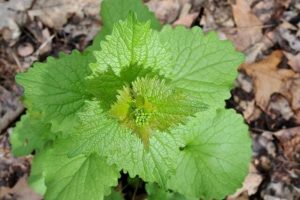Wintersweet (Chimonanthus praecox) is named for its strongly scented flowers that appear on bare stems in January and February – the scent of the blooms is so powerful that it can be detected several metres away. Wintersweet is a good choice for a medium-sized garden as, although it can reach 4m tall, it’s relatively slow-growing. It’s a great choice for planting next to a path or by your front door, so you can enjoy its fragrance throughout winter. It also works well as a cut flower.
Where to grow wintersweet

For best results grow Chimonanthus praecox in well-drained soil in a warm, sheltered position in full sun, such as against a south-facing wall. The warmest, most sheltered spot will ensure the most flowers, although it’s worth noting that wintersweet can take several years to bloom after planting.
Bear in mind that the foliage of chimonanthus is not its best feature, so consider growing it next to a summer-flowering shrub, which will take attention away from it in the growing season.
When to plant wintersweet
The best time to plant wintersweet is in either autumn or spring, when the soil is moist and warm.
How to plant wintersweet
Water the shrub before planting. Dig a hole twice the width of the rootball but the same depth, then break up the base and side of the hole with a fork. Position the rootball so the top sits level with the surrounding soil, then backfill with soil, firm and water well. Continue watering until the plant is established.
If planting chimonanthus against a wall, install a training support such as a trellis or wires before planting. Position the support around 30cm above ground level, with a 5cm gap between the support and the wall. Space wires 30-45cm apart. Dig a planting hole 45cm away from the wall and plant at a 45º angle, with the wintersweet facing the wall. Backfill, firm and water as above. Tie in stems to the supports. If they’re too short, push canes into the soil at an angle in the direction of the support, and tie stems to them instead.
If planting chimonanthus in a pot, choose a container slightly larger than the pot you bought it in, and part-fill with a loam-based compost such as John Innes Number 2, mixed with horticultural grit, to aid drainage. Sit the top of the rootball just below the rim of the pot, and backfill and water as above.
How to care for wintersweet
Chimonanthus praecox is a low-maintenance plant that doesn’t need much year-round care. Water until established after planting, and then again in dry weather. Mulch around the base of the plant annually with a 5-7cm layer of well-rotted manure or compost.
Pot-grown chimonanthus will need watering more regularly – as often as every day in very hot weather – and feeding fortnightly with a balanced liquid fertiliser. Younger plants will need repotting into a pot the next size up, every year or so. If you don’t repot your chimonanthus, top-dress in spring by removing the top 5cm of compost and replacing with fresh.
How to prune wintersweet
Prune in early spring, after flowering to avoid cutting off any buds. Keep pruning to a minimum, removing dead, diseased or crossing branches and reshaping if needed.
If training wintersweet against a wall, start by pruning to create a permanent woody framework, such as a fan or espalier shape, but you can also opt for something more informal. Once the framework is established, annual pruning is done to simply shorten sideshoots to two to four buds, and remove any stems growing towards or away from the wall. Tie new growth in to the support trellis or wires.
How to propagate wintersweet
You can propagate Chimonanthus praecox by seed, but the plant will take a long time to mature and up to 15 years to flower. To ensure reliable blooms from cultivated varieties, it’s best to propagate by softwood cuttings or layering in the summer.
Pests and diseases
Chimonanthus praecox is generally pest and disease free.
Advice on buying wintersweet
- Wintersweet may also be sold under its botanical name, Chimonanthus praecox
- Always check plants for signs of damage or disease before buying.
- Wintersweet is slow growing, so it’s worth spending a bit more for a good-sized plant
Where to buy wintersweet
Wintersweet varieties to grow

Chimonanthus praecox ‘Luteus’ – the flowers are larger than the species and completely yellow, without the purple inner petals. It blooms later in winter than original wintersweet, but its fragrance is not as strong. Height x Spread: 4m x 2.5m
Chimonanthus praecox ‘Grandiflorus’ has larger leaves and deeper yellow flowers than the species, but they still have the central purple blotch. H x S: 4m x 2.5m
- Buy Chimonanthus praecox ‘Grandiflorus’ from Cowell’s Garden Centre
Chimonanthus praecox – the species is the easiest to find available to buy online, and has the classic yellow flowers with purple at their centre. H x S: 4m x 2.5m
- Buy Chimonanthus praecox from Crocus
Frequently asked questions
What does wintersweet smell like?
The flowers have a strong scent that is often described as sweet and spicy. Indoors, it only takes a few stems to fill a whole room with fragrance.
What does wintersweet look like in summer?
This bushy shrub has narrow green leaves and doesn’t offer much interest through summer. Combine it with other shrubs and perennials that have summer appeal.

































